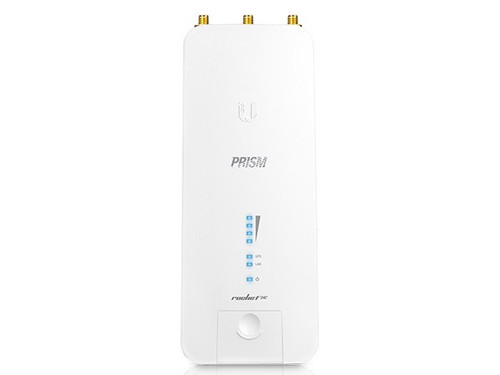-

MikroTik
SKU: RBLHGG-60adkit
MikroTik RBLHGG-60adkit Wireless Wire Dish 60Ghz
$348.00Usually Ships in 24 Hours8 In Stock -

Ubiquiti
SKU: LTU-LR-US
Ubiquiti LTU-LR-US PTMP 5GHz Long-Range LTU Client Radio US Version
$148.70Usually Ships in 24 Hours301 In Stock -

Ubiquiti
SKU: PBE-5AC-ISO-Gen2
Ubiquiti PBE-5AC-ISO-Gen2 airMAX PowerBeam AC 5 GHz ISO Gen2 international Version
$141.00Usually Ships in 24 Hours91 In Stock -

Ubiquiti
SKU: PBE-5AC-ISO-Gen2-US
Ubiquiti PBE-5AC-ISO-Gen2-US airMAX PowerBeam AC 5 GHz ISO Gen2 US Version
$139.90Usually Ships in 24 Hours229 In Stock -

Ubiquiti
SKU: LTU-Pro-US
Ubiquiti LTU-Pro-US LTU PtMP 5GHz Station & Client Radio US Version
$199.00Usually Ships in 24 Hours154 In Stock -

Ubiquiti
SKU: LTU-Lite
Ubiquiti LTU-Lite 5GHz PtMP LTU Client Radio International Version
$107.40Usually Ships in 24 Hours50 In Stock -

Ubiquiti
SKU: PBE-5AC-Gen2-5-US
Ubiquiti PBE-5AC-Gen2-5-US 5GHz PowerBeam ac Gen2 25dBi (5-pack) US Version
$640.00Usually Ships in 24 Hours646 In Stock -

Ubiquiti
SKU: B-DB-AC
Ubiquiti B-DB-AC Bullet Dual-Band AC 2.4/5GHz Radio International Version
MSRP:$99.00$92.00Usually Ships in 24 Hours29 In Stock -

Ubiquiti
SKU: PBE-5AC-Gen2
Ubiquiti PBE-5AC-Gen2 airMAX PowerBeam AC, 5 Ghz, Bridge International Version
$129.99Usually Ships in 24 Hours51 In Stock -

Ubiquiti
SKU: PBE-5AC-Gen2-US
Ubiquiti PBE-5AC-Gen2-US airMAX PowerBeam AC, 5 Ghz, Bridge US Version
$139.99Usually Ships in 24 Hours198 In Stock -

Ubiquiti
SKU: B-DB-AC-US
Ubiquiti B-DB-AC-US Bullet Dual-Band AC 2.4/5GHz Radio US Version
MSRP:$99.00$97.30Usually Ships in 24 Hours265 In Stock -

Ubiquiti
SKU: R2AC
Ubiquiti R2AC 2.4GHz Airmax AC Basestation with Airprism Technology International Version
MSRP:$209.00$207.40Usually Ships in 24 Hours1 In Stock
